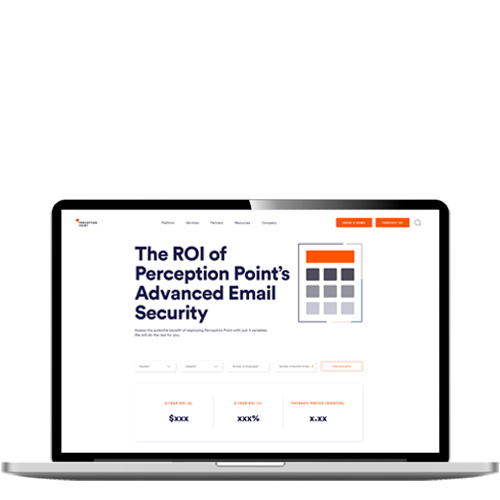In today’s digital age, organizations rely heavily on technology to streamline operations, enhance productivity, and gain a competitive edge. However, alongside the official IT infrastructure, there exists a hidden realm known as Shadow IT.
This term refers to the use of unauthorized or unapproved technology solutions within an organization.
In this guide, we will delve into the world of Shadow IT, explore its examples, discuss the associated risks and benefits, and discover effective strategies for managing its inherent risks.
This is part of a series of articles about cybersecurity.
In this article
What Is Shadow IT?
Shadow IT, a prominent concept in today’s dynamic business landscape, is described as the usage of any IT resources—including software, hardware, or other technology—within an enterprise, without the explicit approval or even the knowledge of the organization’s IT department.
This phenomenon typically arises when employees, driven by a desire to enhance their productivity or fulfill particular requirements, opt to use solutions outside of the officially sanctioned IT channels.
By operating outside the purview of IT oversight, Shadow IT can potentially introduce various challenges related to security and compliance within the organization.
Shadow IT, a prominent concept in today’s dynamic business landscape, is described as the usage of any IT resources—including software, hardware, or other technology—within an enterprise, without the explicit approval or even the knowledge of the organization’s IT department.
Some examples of Shadow IT include: Personal cloud storage and file-sharing services, Messaging and collaboration apps, Project management tools, Browser extensions/plug-ins, Non-approved software installations, Departmental databases or spreadsheets, and Bring Your Own Device (BYOD) arrangements.
The risks of shadow IT include: Security vulnerabilities and data breaches, Regulatory non-compliance, Increased complexity and integration challenges, Inadequate support and troubleshooting, Potential loss of intellectual property, and Inconsistent data management practices.
The benefits of Shadow IT include: Innovation and agility, Enhanced productivity and efficiency, User empowerment and satisfaction, Quick experimentation and prototyping, Identifying gaps in official IT offerings, and Flexibility in adopting emerging technologies.
You can manage the risks of shadow IT in the following ways: promote communication and education, implement a Shadow IT policy, regularly assess and update official IT offerings, provide secure and user-friendly alternatives, and continuously monitor and audit.

Tal ZamirCTO, Perception Point
Tal Zamir is a 20-year software industry leader with a track record of solving urgent business challenges by reimagining how technology works.
TIPS FROM THE EXPERTS
- Integrate AI-driven analytics for shadow IT detection. Implement AI-driven tools that can analyze user behavior and network traffic to detect patterns indicative of Shadow IT usage. This approach provides a more proactive and predictive mechanism for identifying unauthorized technologies.
- Implement a zero-trust network architecture. Apply zero-trust principles where every device, user, and application is continuously verified before being granted access to resources. This limits the operational space for Shadow IT activities by enforcing strict access controls.
- Automate policy enforcement through scripting. Utilize automation and scripting to enforce Shadow IT policies. Automated scripts can monitor for unauthorized software installations or configurations and take corrective action without requiring manual intervention.
- Leverage browser security tools
Browser security solutions. like extensions, can be configured to detect unauthorized software installations and other Shadow IT activities at the endpoint level, providing real-time alerts and remediation options.
Examples of Shadow IT
Shadow IT manifests in various forms across organizations. Here are a few common examples:
- Personal cloud storage and file-sharing services
- Messaging and collaboration apps
- Project management tools
- Browser extensions/plug-ins
- Non-approved software installations
- Departmental databases or spreadsheets
- Bring Your Own Device (BYOD) arrangements
Risks and Benefits of Shadow IT
While Shadow IT may seem enticing to employees seeking quick solutions, it brings along inherent risks that organizations must acknowledge. Additionally, there are potential benefits worth exploring. Let’s take a closer look:
Risks of Shadow IT
- Security vulnerabilities and data breaches
- Regulatory non-compliance
- Increased complexity and integration challenges
- Inadequate support and troubleshooting
- Potential loss of intellectual property
- Inconsistent data management practices
Benefits of Shadow IT
- Innovation and agility
- Enhanced productivity and efficiency
- User empowerment and satisfaction
- Quick experimentation and prototyping
- Identifying gaps in official IT offerings
- Flexibility in adopting emerging technologies
How to Manage the Risk of Shadow IT
Effectively managing Shadow IT is crucial to minimize risks and maximize the benefits it can bring. Implementing a comprehensive strategy involves the following steps:
Promote Communication and Education:
Establish open lines of communication to encourage employees to share their technology needs and challenges. Conduct training sessions to raise awareness about the risks associated with Shadow IT while explaining the approved IT infrastructure and available alternatives.
Implement a Shadow IT Policy:
Develop a clear and concise policy that defines the boundaries of acceptable technology usage, outlines the approval process, and explains the consequences of violating the policy. This policy should align with organizational goals and address the specific needs and concerns related to Shadow IT.
Regularly Assess and Update Official IT Offerings:
One of the driving factors behind Shadow IT is the perception that the official IT infrastructure does not meet users’ needs. Regularly evaluate and update the approved technology solutions to ensure they align with the evolving requirements of employees and departments.
Provide Secure and User-Friendly Alternatives:
Collaborate with employees to understand their technology requirements and preferences. Offer approved alternatives that are user-friendly, secure, and capable of meeting their specific needs, thus reducing the temptation to resort to Shadow IT.
Continuous Monitoring and Auditing:
Implement monitoring tools and processes to detect instances of Shadow IT within the organization. One effective monitoring point is user browsers and deploying tools that can provide browser governance and visibility can help shed light on Shadow IT activities. Regularly audit the technology landscape to identify any unauthorized solutions and take appropriate actions to either approve, replace, or discontinue their usage.
While Shadow IT may present risks, it is crucial for organizations to acknowledge its existence and adopt proactive measures for effective management. By fostering communication, implementing clear policies, and offering secure alternatives, organizations can strike a balance between leveraging the benefits of Shadow IT and mitigating the associated risks. Embracing a well-managed technology ecosystem will enable organizations to navigate the digital landscape confidently and drive innovation while ensuring the security and compliance of their operations.
Stopping Shadow IT with Perception Point
Perception Point’s Advanced Browser Security solution adds enterprise-grade security to your organization’s native browsers, including best-of-breed detection of malicious websites/downloads, DLP controls, and browser governance. Amongst other features, it can provide security teams with extended visibility into user registration/login events, visited websites, and installed browser extensions. Furthermore, security teams can limit which web categories are allowed and which file types users can download, thereby preventing access to unwanted shadow IT apps.
Beyond browser security, Perception Point’s Advanced Email Security is an integrated cloud email security solution (ICES) that can replace SEGs. The solution cloud-native SaaS solution protects your organization against all threats using 7 layers of advanced threat detection layers to prevent malicious files, URLs, and social-engineering based techniques.
An all-included managed Incident Response service is available for all customers 24/7 with no added charge. Perception Point’s team of cybersecurity experts will manage incidents, provide analysis and reporting, and optimize detection on-the-fly. The service drastically minimizes the need for internal IT or SOC team resources, reducing the time required to react and mitigate web-borne attacks by up to 75%.
Get a demo today!


























